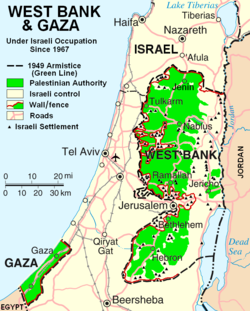Gaza Conflict And Role Of Social Media: Dubious Assertions – Analysis
By RSIS
The use of social media during the recent conflict between Israel and Hamas seemed to highlight social media’s revolutionary role. In fact social media’s influence is significantly more limited.
By Nathan Cohen
IN THE latest bout of fighting between Israel and Hamas in Gaza only one victor emerged uncontested: social media, and Twitter in particular. The Israel Defence Force (IDF) announced Operation Pillar of Defence with a tweet. During the ensuing days, the IDF regularly updated its Twitter, Facebook, Flickr and Tumblr, accounts with videos of the latest precision strikes and sleek infographics.

Not to be outdone, Hamas’ military wing, the Al-Qassam Brigades, constantly refreshed its social media accounts with confident statements of its impending victory along with videos and pictures of Israeli-wrought destruction. In the eyes of many, Operation Pillar of Defence was a seminal event; social media had become militarised and militaries had become twitterised. Perhaps. But perspective is important. To what extent has social media really altered the political and military battlefields?
Four dubious assertions
The rise of social media has been accompanied by four dubious assertions of its impact.
Firstly, social media facilitates the dissemination of anti-establishment information and propaganda. But historically so has regular media. In 1979 Iranian revolutionaries distributed cassette tapes of Ayatollah Ruhollah Khomeini’s fiery sermons to great effect. In 1998 radios offered an outlet for unauthorised news accounts in Indonesia. The revolutionaries of the Arab Spring are only the latest iteration of this phenomenon. The introduction of Twitter and Facebook in the political landscape is a matter of scale and not necessarily of invention.
Secondly, social media, with its lack of gatekeepers and its ability to publicise events almost instantaneously, creates a better-informed public amidst the fog of war. This is more contentious than the previous assertion. The immediacy of information is coupled with an immediacy of propaganda. The social media accounts of the IDF, Hamas, and even the traditional news organisations are still subject to the same biases. All the more so of the average citizen-journalist whose subjectivities are unknown.
Furthermore, despite the unobstructed availability of both the IDF and Palestinian narratives, there is no guarantee that social media can combat preexisting biases. The selectivity of social media — the user chooses who to follow on Twitter or who to befriend on Facebook — means that the user is likely exposed to similar-minded people. Like-minded communities regurgitate statistics, photographs, and videos in an exercise of self-edifying vindication.
Thirdly, social media captures the attention of a wider audience. It can, but not necessarily. Ever since the Arab Spring pundits have lauded social media’s ability to globalise local events. Certainly this applied to Operation Pillar of Defence. However, this was not the case with the war in Somalia between the Kenyan Defence Forces (KDF) and the al-Qaeda affiliated al-Shabaab.
Since Kenya launched Operation Linda Nichi in 2011 to evict al-Shabaab from southern Somalia, the two sides have battled in the field and over Twitter. Both sides posted the latest updates, pictures, and direct refutations of the other’s statements. However, these Twitter campaigns, with tens of thousands of followers, garnered hardly any attention from outside the region.
Therefore, we should not underestimate the importance of the audience’s preexisting interest in the situation. The international attention given to Egypt in 2011 and Israel and Gaza in 2012 was more a product of long established narratives than any innovation in social media.
Lastly, the use of social media changes outcomes. This claim is both the hardest to prove and to refute because it requires counterfactuals. Nevertheless, while Egypt’s revolution undoubtedly benefited from Twitter and Facebook, its success also heavily depended on entirely unrelated developments such as a deepening rift between the Mubarak family and the Egyptian military. Furthermore, the liberal revolutionaries most identified with social media have found themselves marginalised in post-Mubarak Egypt, incapable of matching the organisational prowess of Islamist groups.
Similarly, while pundits proclaim social media’s revolutionary role in Israel’s operation in Gaza, did it affect the outcome? Not in a tangible way. The conclusion of Operation Pillar of Defence replicates exactly the conclusion of Operation Cast Lead, fought four years earlier without as sophisticated social media tactics. In both instances, after an intense but relatively brief spurt of fighting, Israel and Hamas agreed to a ceasefire negotiated by Egypt.
The agreement allowed both to claim victory; Israel reestablishes (temporary) deterrence while continuing to blockade Gaza, while Hamas remains firmly entrenched in power. The international reaction – with the West supporting Israel, the Arab world condemning Israel, and the United Nations pleading for peace – also mirrored that of previous conflicts.
Impact real, but nuanced
These observations are not meant to deny social media any value. Its ability to self-correct almost instantaneously surpasses any other medium. For example, in the latest conflict the Al-Qassam Brigades tweeted an image of a bloodied child purportedly injured from an Israeli air strike. A few hours later, several people, including Hamas sympathisers, had identified the picture as taken a month before in Syria.
Thus the impact of social media is real but nuanced. It is a variable, not a determinant. It influences the narrative, but by no means shapes the narrative. It may catalyse behaviour but it cannot sustain behaviour. These capabilities warrant appreciation, not hype.
Nathan Cohen is a Research Assistant with the International Centre for Political Violence and Terrorism Research (ICPVTR) at the S. Rajaratnam School of International Studies (RSIS), Nanyang Technological University. The opinions expressed in this article do not reflect those of ICPVTR or RSIS.
